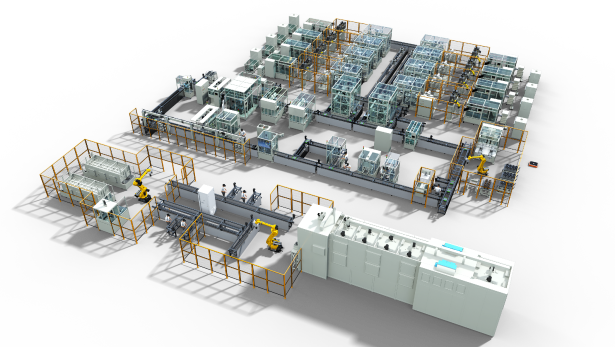Automated equipment to promote the construction of smart cities
"Intelligence" has been a popular topic in recent years. Discussing the driving force of this trend can be summarized for two reasons. One is the maturity of automation technology, which gradually extends the application from the original manufacturing industry to other fields. It is the needs of each industry itself, such as medical treatment, transportation, government agencies, etc., in these fields, a large number of automation equipment is introduced, and then through the close integration between the equipment, the overall system has a certain degree of intelligence, and when scattered throughout the city After the construction of each link of the city is completed one by one, the smart energy of the overall city is almost a matter of course. Why is it "almost"? Because from the current development situation, there is still a piece of puzzle that has not been put on, that is, the "cloud".
In the past few years, automation technology has rapidly expanded from the manufacturing industry to various vertical applications. Nowadays, whether it is retail, transportation, medical, catering, automation equipment is an important driving force for business operations, but in the past, automation equipment has networking functions. But it is only limited to the transmission and control of single information. In recent years, the concept of cloud computing has emerged. Automation systems have introduced many concepts of the cloud, making the overall system more intelligent, and at the same time making the vision of a smart city come true.
Cloud computing is mainly based on the consumer side. The public cloud is built to allow ordinary people to connect to the cloud and access various data. The application of automation equipment is rarely mentioned. In fact, automation equipment is the most important cornerstone of a smart city. With this cornerstone and the various functions of cloud computing, smart cities can take shape.
The vision of a smart city is to connect devices scattered around the world through the network, and manage software and hardware in a unified manner. For example, the DigitalSignage system in a department store. The DigitalSignage set on each floor will have different playback content depending on the products sold. The method may be to use manual methods to replace CDs or use portable storage devices to enter new content. This method may be adopted in department stores not far away from the equipment, but if the equipment is far away, such as high-speed rail, banks, chain stores, etc., manual labor is required. Changing the content one by one will be time-consuming and costly. Once these devices are introduced into the cloud concept, not only will the playback content be uniformly transmitted by the management background, breaking time and space limitations, but the background system can also grasp the status of all the terminal equipment, such as device downtime, background system It can be known immediately and restarted directly from the remote to keep the equipment operating normally. If the operating system needs to be updated, information can also be transmitted in real time, so that the on-site equipment managers can choose their own time to update.
Take the medical field as an example. In October 2011, Taiwan’s Sun Yat-sen Medical University attached hospital beds in the new hospital area and introduced the “bed care system”. Patients can use the bedside system to surf the Internet, watch movies, and even order meals. The system also integrates operational functions such as medical form application, facility repairs, meal ordering services, and inpatient medication information query. This platform combines the cloud computing concept of platform as a service (PaaS). Prior to this, Zhongshan Affiliated Hospital also introduced KIOSK and DigitalSiganage systems such as registration and medical visits, these devices are the architecture-as-a-service (IaaS) concept in cloud computing. The introduction of these concepts allows smart devices that have been built to go to the cloud, interlocking. Become an important pillar of a smart city.
Cloud has become an important trend in the automation industry. In the future, all automation products must not only have certain networking functions, but also be incorporated into the cloud system. The advantage of introducing the cloud lies in the reduction of system management costs.
In the past, automation equipment operated independently. Although the automation equipment is stable, it will cause major losses to the production line if it fails. Therefore, a certain amount of human supervision equipment must be configured. When all equipment has online functions, they become part of the cloud. After that, the operating status of all equipment can be fully grasped, and more added value can be generated at the same time. For example, the service life of all equipment can be fully understood and the maintenance time can be scheduled. If the equipment is in condition, the lighter can be remotely restored, and the more serious In this way, the cause of system damage can be understood remotely, and the information can be given to maintenance personnel to shorten the rescue time.
In addition to the drastic drop in software and hardware management costs, the introduction of cloud has also allowed system management to produce new business models, such as the road condition monitoring system of the Palace Museum’s monitoring system, and its network management functions are not located in the organization’s location. It is managed by the system builder. This professional division of labor eliminates the need for system importers to invest resources and set up another team to be responsible for network management. It also allows system integration vendors to develop new profit models and create a win-win situation.





